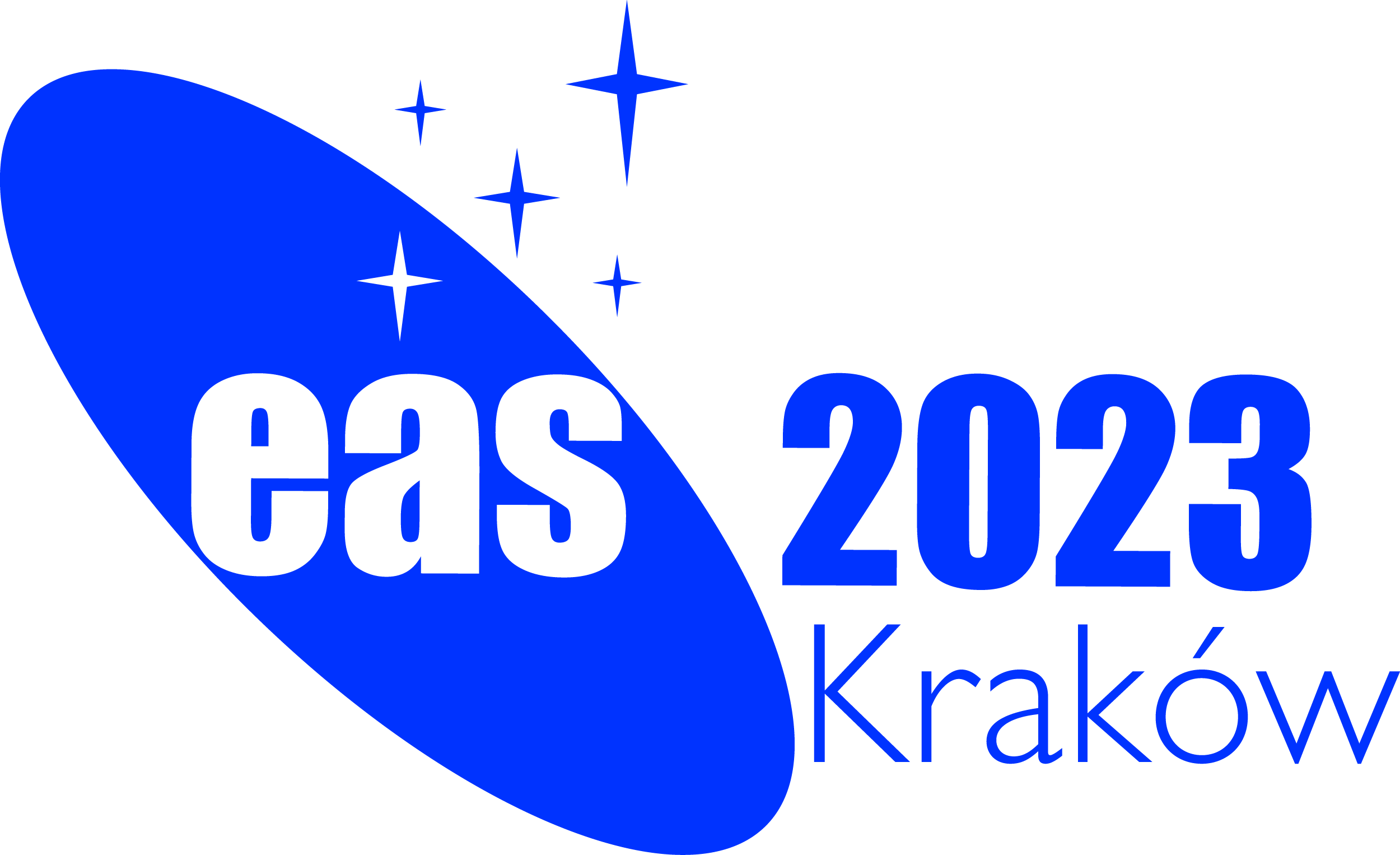Special Session SS21
10 July 2023
Unveiling the secrets of chemically peculiar stars
Aims and scope
Chemically peculiar (CP) stars are a heterogeneous group of objects characterised by surface abundances which can differ by many orders of magnitude from solar values. About 30% of main-sequence B, A, and F-type stars display atmospheric abundance anomalies. Some peculiarities are well-defined, such as Cr, Sr, and rare earth element overabundances for magnetic Ap stars. However, many peculiar B and A stars defy classification. CP stars are found in two main categories, namely (i) stars with strong magnetic fields (He-rich, He-weak Si and SrTi, ApBp) and (ii) stars with very weak or no detected magnetic field (He-weak PGa, HgMn, Am). Some CP stars show spectroscopic and photometric variability due to inhomogeneous surface elements distribution (spots) and in hot stars due to circumstellar material trapped in the stellar magnetospheres. Magnetic ApBp stars are unique laboratories to study the effects of magnetic fields on stellar atmospheres. Moreover, magnetic stars with masses larger than 8 solar masses are progenitors of supernovae. Therefore, it is important to carry out theoretical and observational studies of the impact of magnetic fields on the evolution of these stars.
The peculiar abundance patterns are the result of atomic diffusion, under the competing influences of gravitational settling and radiative levitation, in some cases in combination with a magnetic field or stellar wind. In cool stars, mixing in deep surface convection zones keeps chemical abundances in the outer regions similar to those in the interior. In hot stars, rapid mass loss brings interior chemistry to the outer regions faster than competing processes can alter it. In the envelopes of main-sequence A and late B stars, convection occurs in a very shallow layer and stellar winds are either weak or absent. Therefore, chemical anomalies may arise in the outer parts of their atmospheres. The resulting abundance patterns are affected by competing processes. The various types of CP stars allow us to test theories and models of these processes. In addition, some Am and ApBp stars show pulsations of delta Scuti, gamma Doradus or Slowly Pulsating B type. By studying pulsations, we can better understand the internal structure of stars, as well as the processes taking place in their atmospheres. As a consequence, CP stars are important and valuable laboratories for studying internal stellar physics and the effect of magnetic fields on stellar atmospheres and stellar pulsations.
The incidence of CP stars in binary systems is 45-50%. This is important because of the synchronisation of rotation of the system components, therefore causing low rotational velocities. A stable atmosphere is the main condition to allow diffusion and the formation of chemical peculiarity in the stellar atmosphere. However, the effects of binarity are not fully understood. In fact, while for Am and HgMn stars, binarity appears to be a basic ingredient providing the slow rotation necessary for the peculiarities to develop, in contrast, the magnetic ApBp stars appear to be anomalously rare in short-period binary systems.
The CP stars provide the best observational laboratories for understanding the physics and interaction among of atomic diffusion, rotation, pulsation, magnetic fields and binarity, with wide applications across stellar astronomy.
Programme
- Atomic diffusion and magnetic fields in chemically peculiar stars
- Binarity and pulsations in chemically peculiar stars
- Origin and Evolution of chemically peculiar stars
Invited speakers
- Georges Alecian, "Abundance anomalies and atomic diffusion in chemically peculiar stars." (Observatoire de Paris, France)
- Victoria Antoci, "Pulsations of chemically peculiar stars" (Technical University of Denmark)
- Markus Schöller, "Binarity of chemically peculiar stars."(ESO, Garching, Germany)
Scientific organisers
- Ewa Niemczura (Chair) (University of Wroclaw, Poland)
- Giovanni Catanzaro (INAF-Osservatorio Astrofisico di Catania, Italy)
- Morgan Deal (Laboratoire Univers et Particules de Montpellier, France)
- Daniel Holdsworth (University of Central Lancashire, UK)
- Swetlana Hubrig (Leibniz-Institut fur Astrophysik Potsdam, Germany)
- Santosh Joshi (Aryabhatta Research Institute of Observational Sciences, India)
- Viktor Khalack (Universite de Moncton, Canada)
- Donald Kurtz (North-West University, South Africa)
- Patricia Lampens (Royal Observatory of Belgium, Belgium)
- Marek Skarka (Astronomical Institute of the Czech Academy of Sciences, Czech Republic)
- Barry Smalley (Keele University, UK)
Contact
Updated on Fri Feb 10 18:30:58 CET 2023
|

 A power cut will shut down all EAS services on Tuesday, 10 January 2017 starting at 7:30 CET.
A power cut will shut down all EAS services on Tuesday, 10 January 2017 starting at 7:30 CET.


